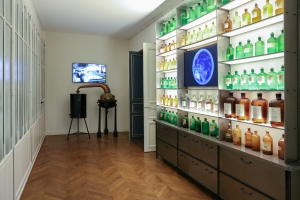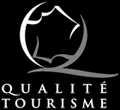
On the screen amongst the jars of raw materials, you can see a screen showing a world map. It presents the various countries that produce raw materials used in perfume-making: can you see your country? Their journey ends in France, on the Riviera, in the worldwide capital of perfume: Grasse. You can also see the historical factory of Fragonard, and the emblematic flowers from the region: rose of may, jasmine, orange blossom, violet, mimosa as well as lavender.
But do you know how Grasse became famous? From the middle ages, the city became a high place for tanners. The specialty of the region was perfumed gloves, a trend that came to France from Italy thanks to Catherine de Medici, the wife of Henri the Second. Little by little, the perfume-making industry will replace that of glove-making, and Grasse will remain the Perfume City.
On the second Screen, you can take a look at one of the most famous extraction techniques still used today, invented in the Antiquity: Distillation. To distillate, water is put at the bottom of the copper alambic, and, above it, a perforated basket with the raw material in it. When the water is boiled and turns into steam, it passes through the raw material, capturing the scent molecules that it takes through the goose neck and then the serpentin, where it cools thanks to the tube being immersed in water. It condensates back into a liquid, made of two different things: essential oils and floral water. The oil floats on top and can be gathered and put in perfume.
Let us now move on to the next room: please scan the QR code on the way.
FRAGONARD PARFUMEUR
A family business with ancestral know-how, Parfumerie Fragonard was founded in 1926 in the town of Grasse.
THE FRAGONARD BLOG
Get all the latest news about our factories and museums and experience the world of Fragonard.


